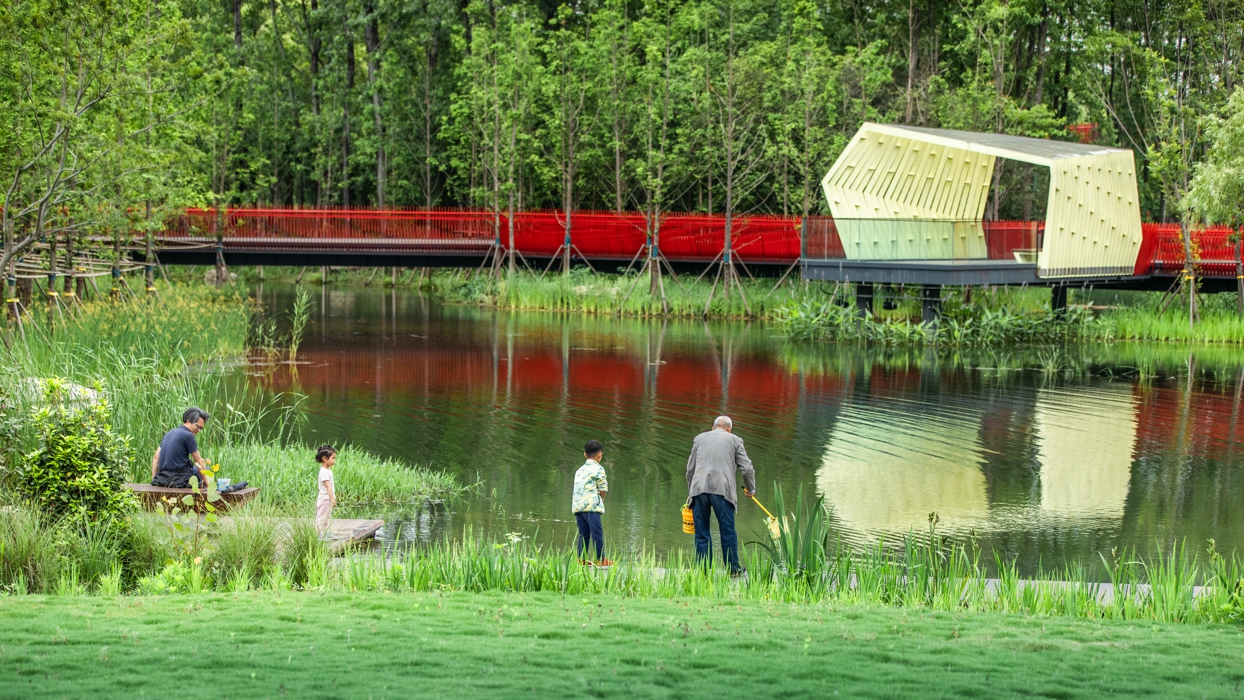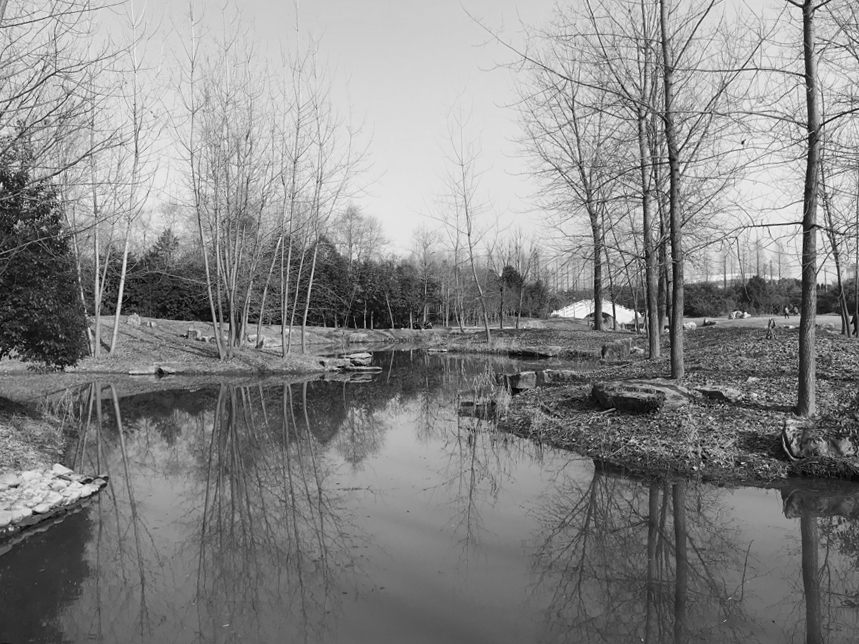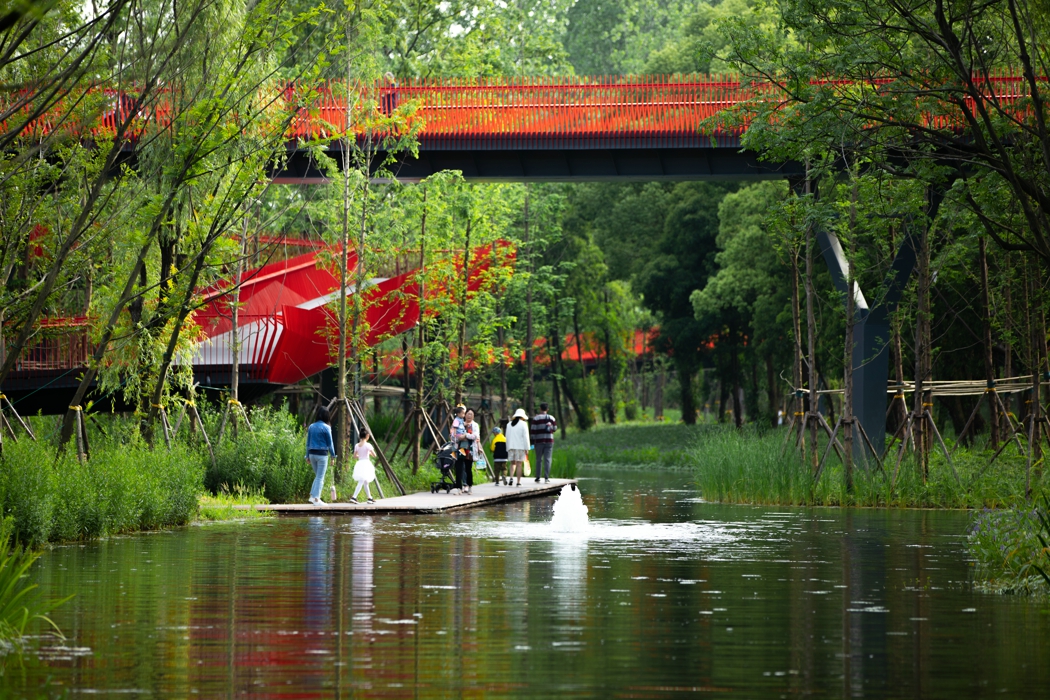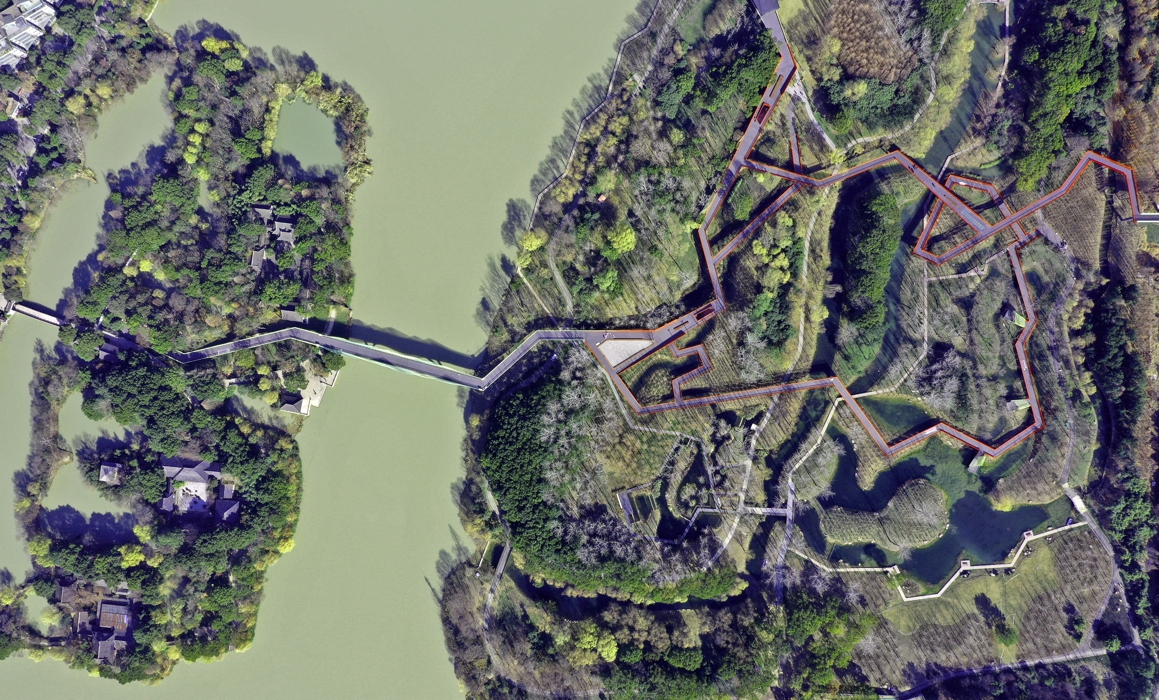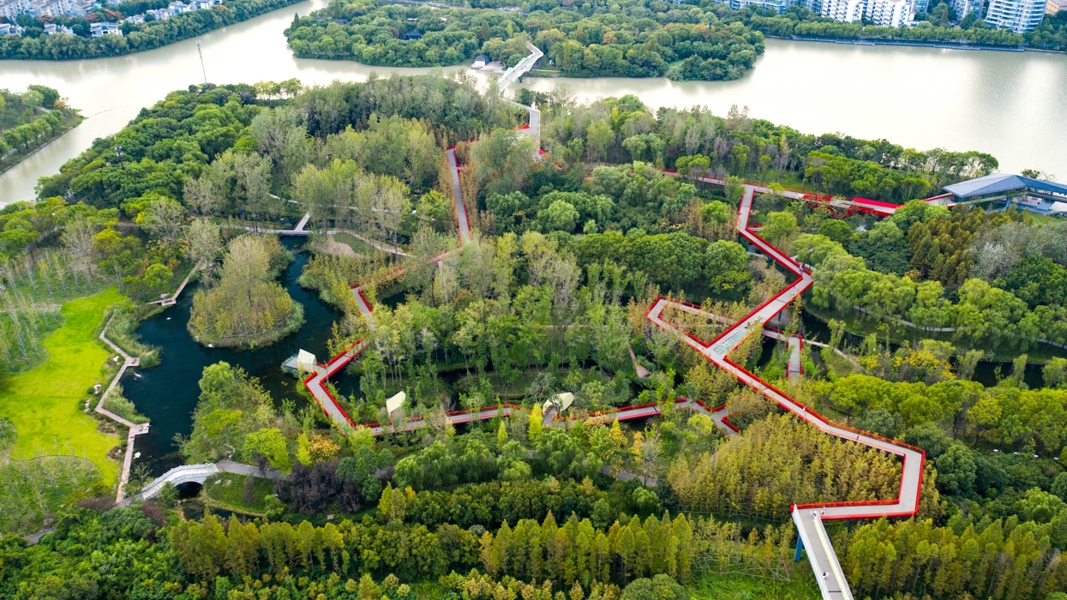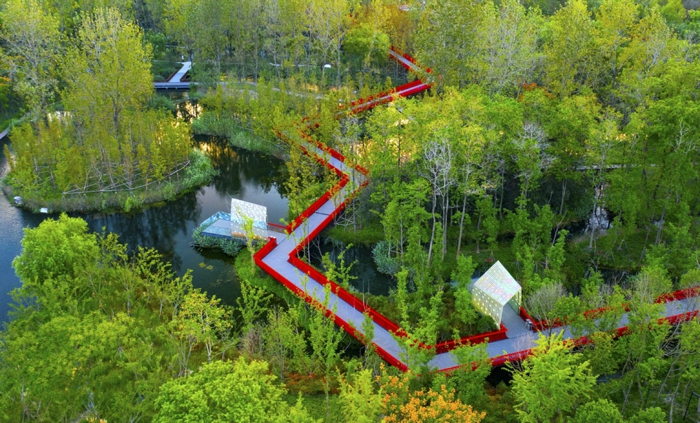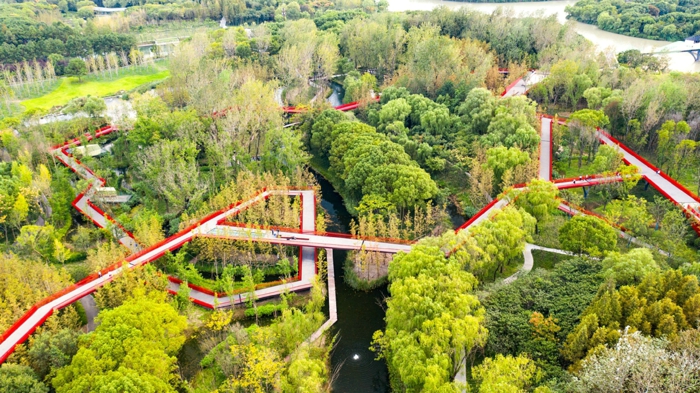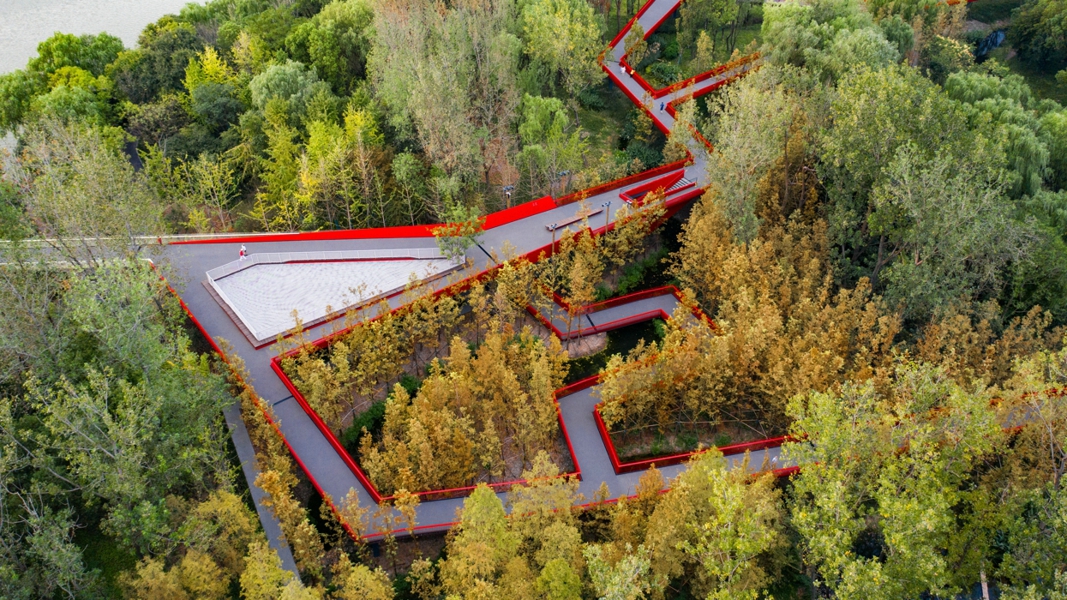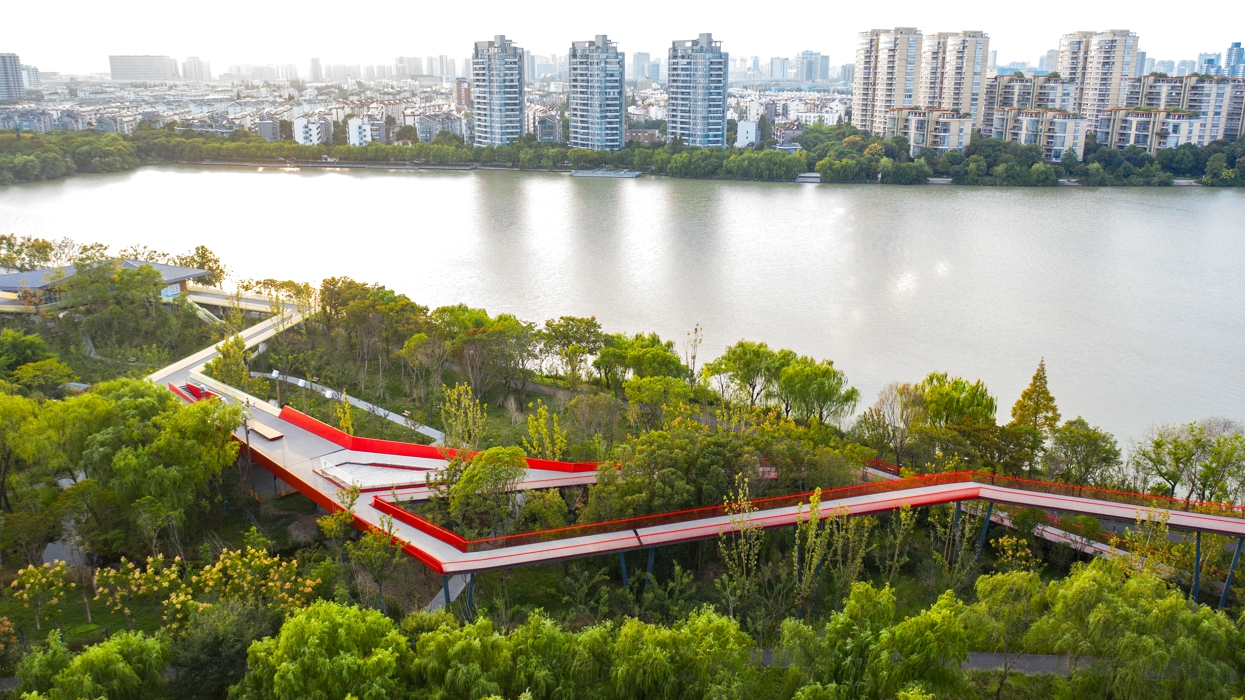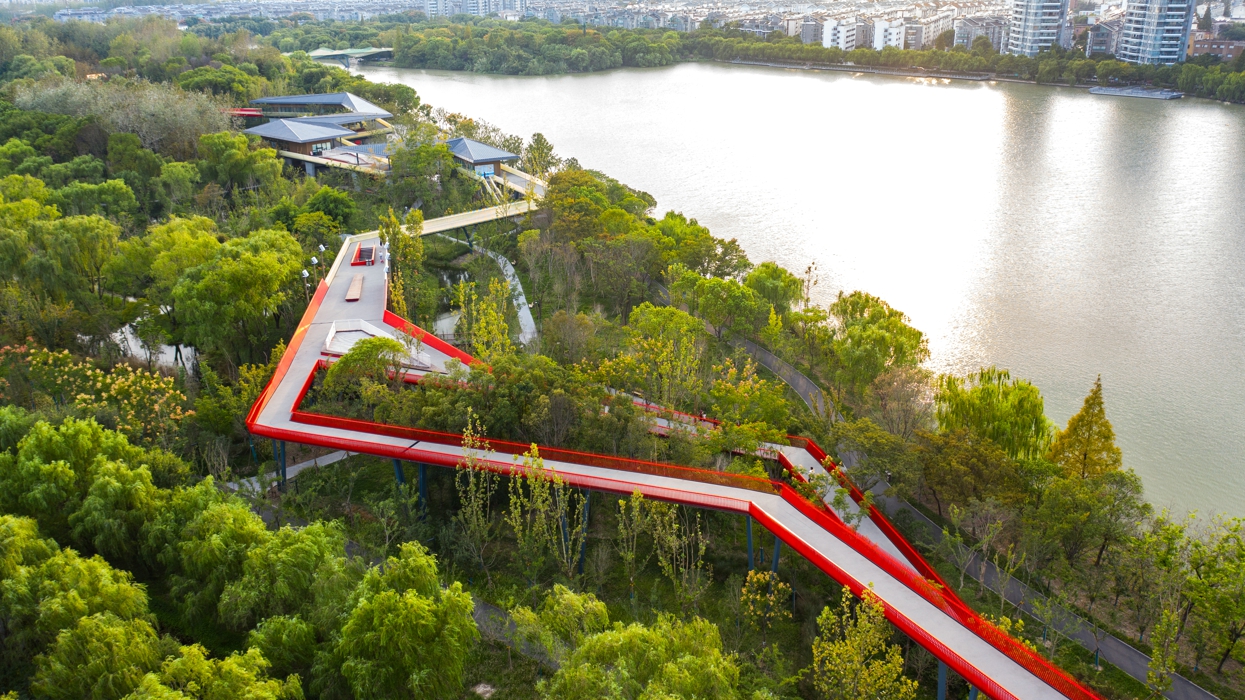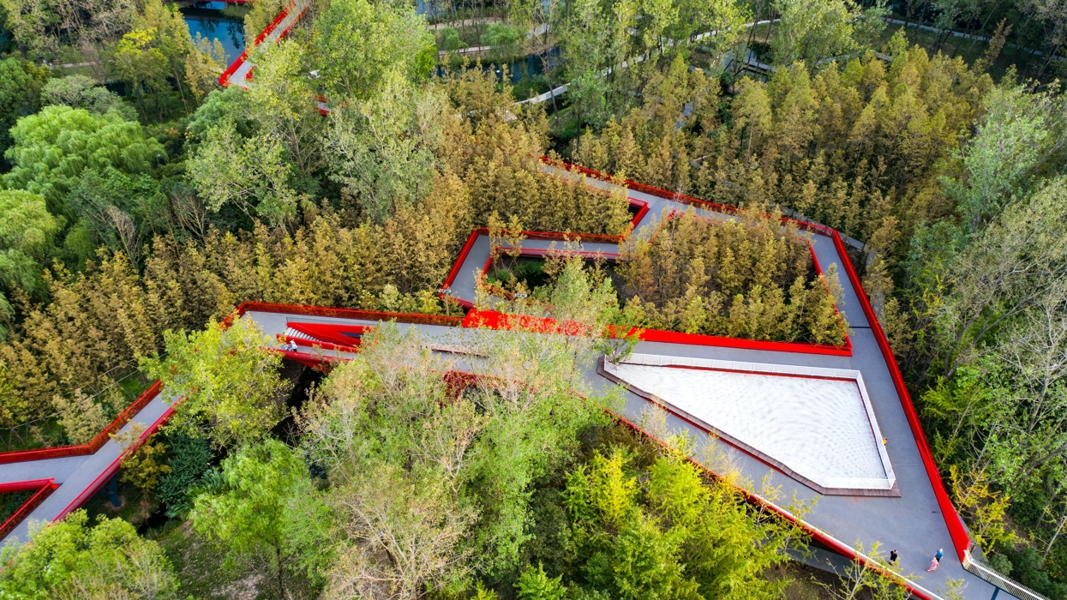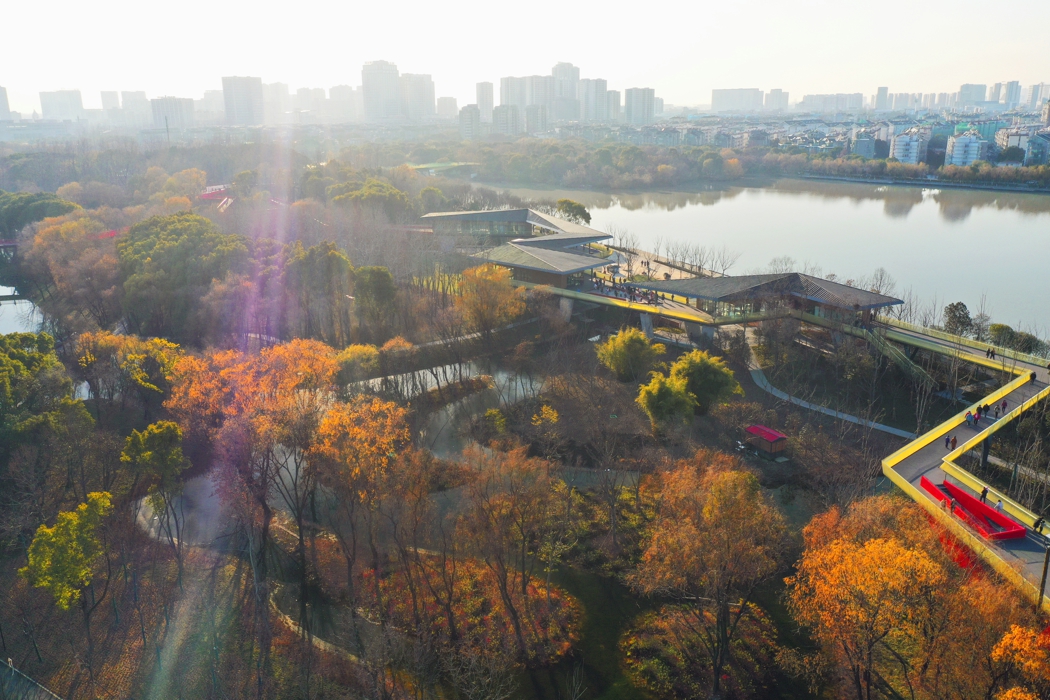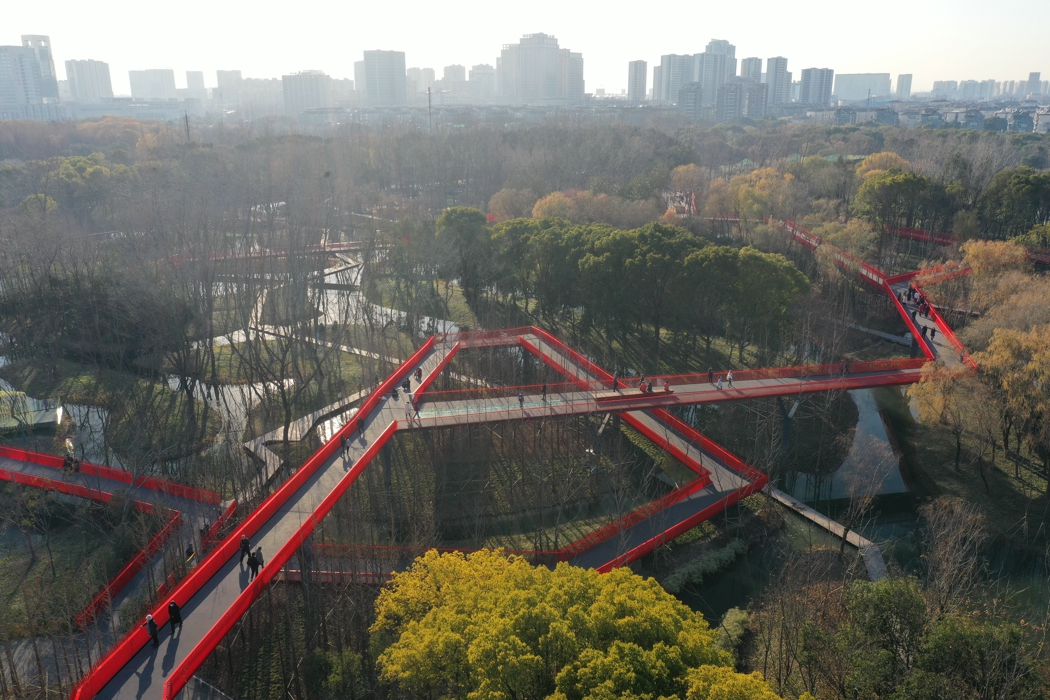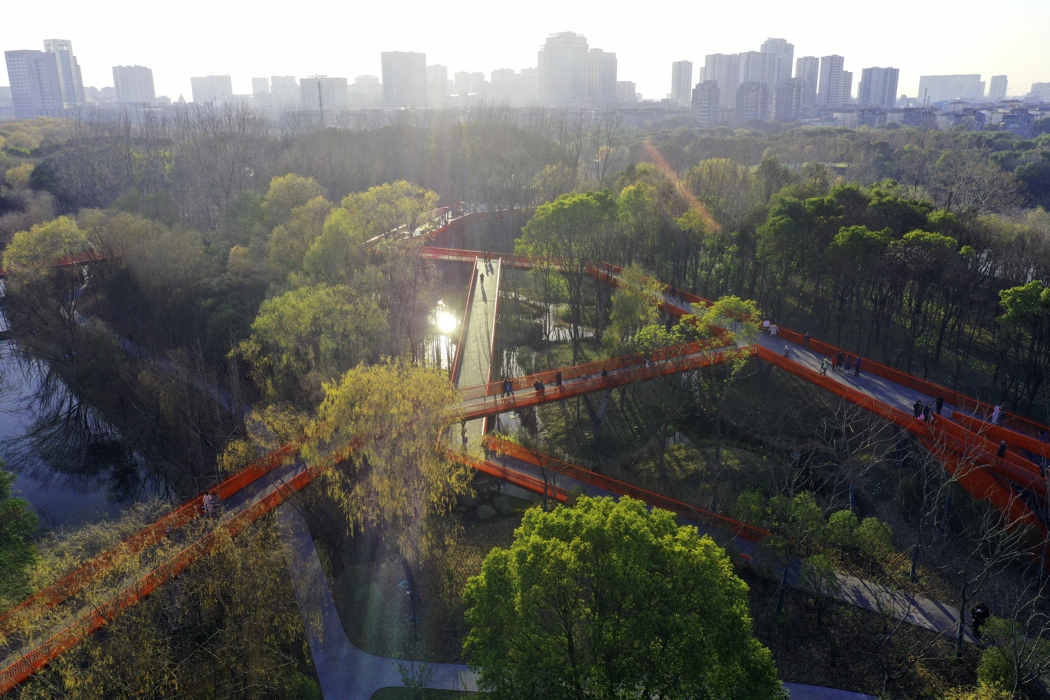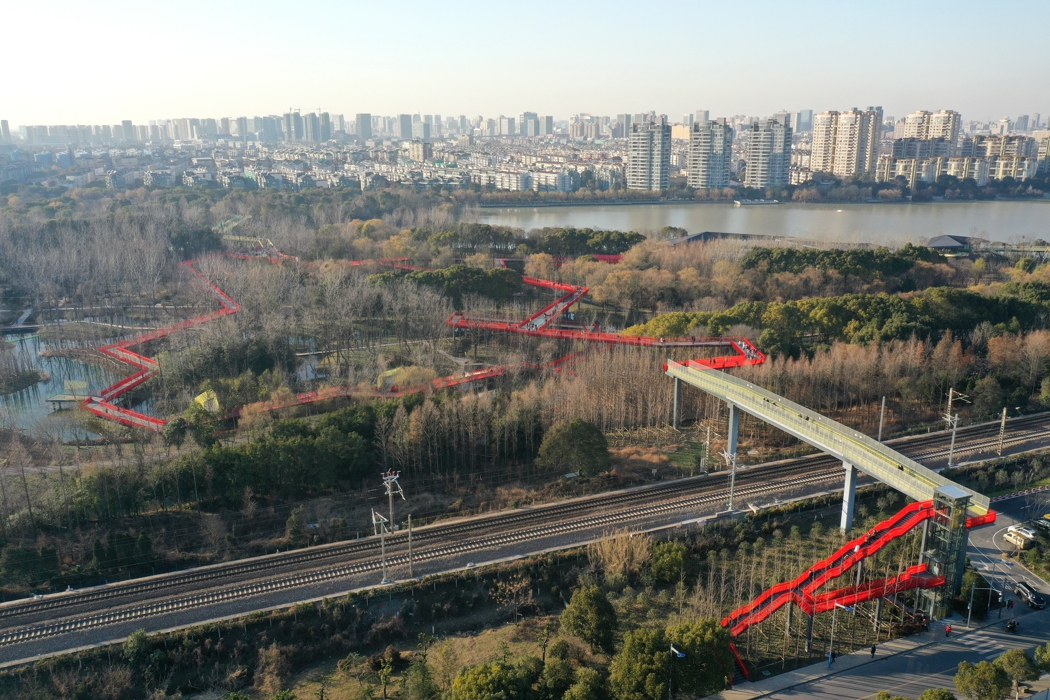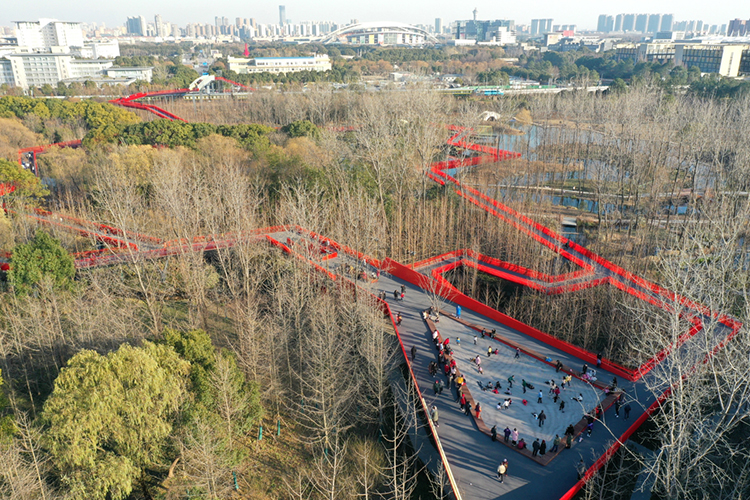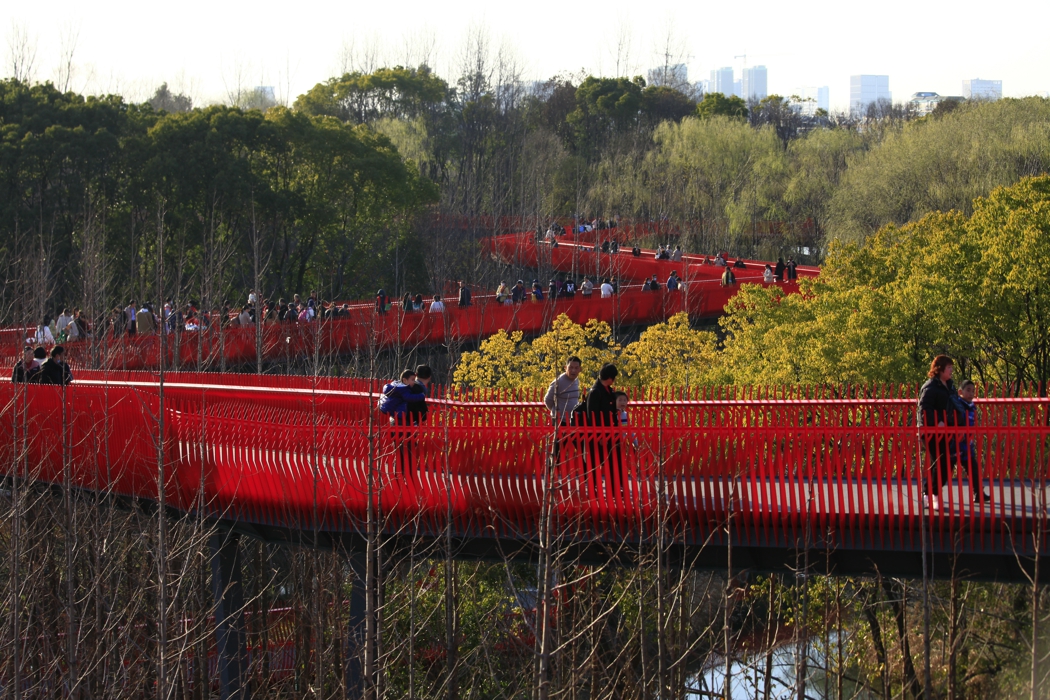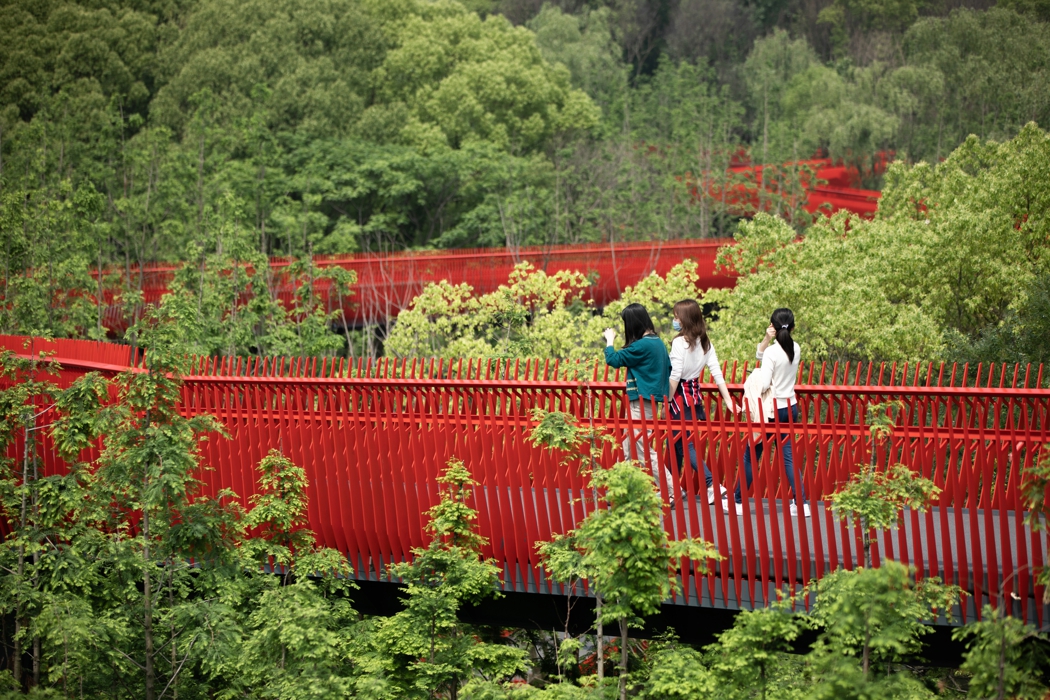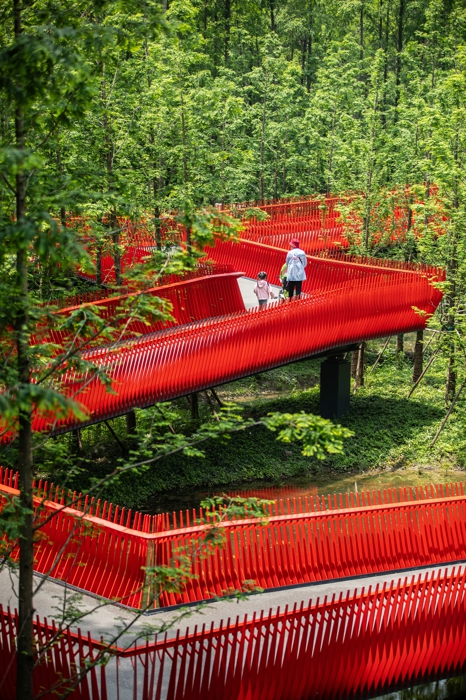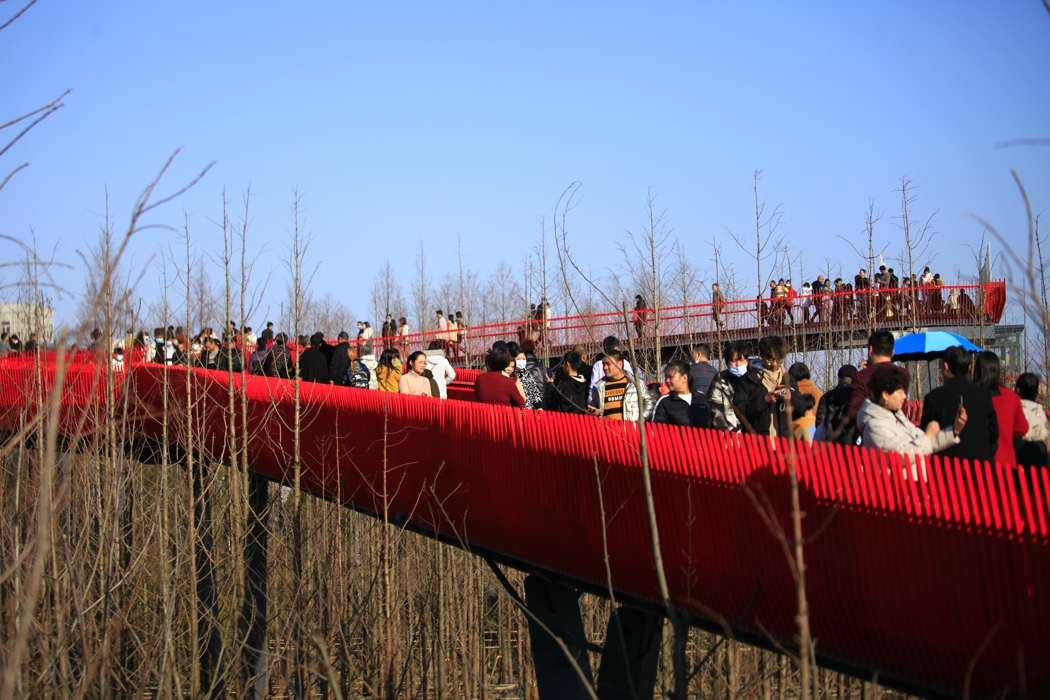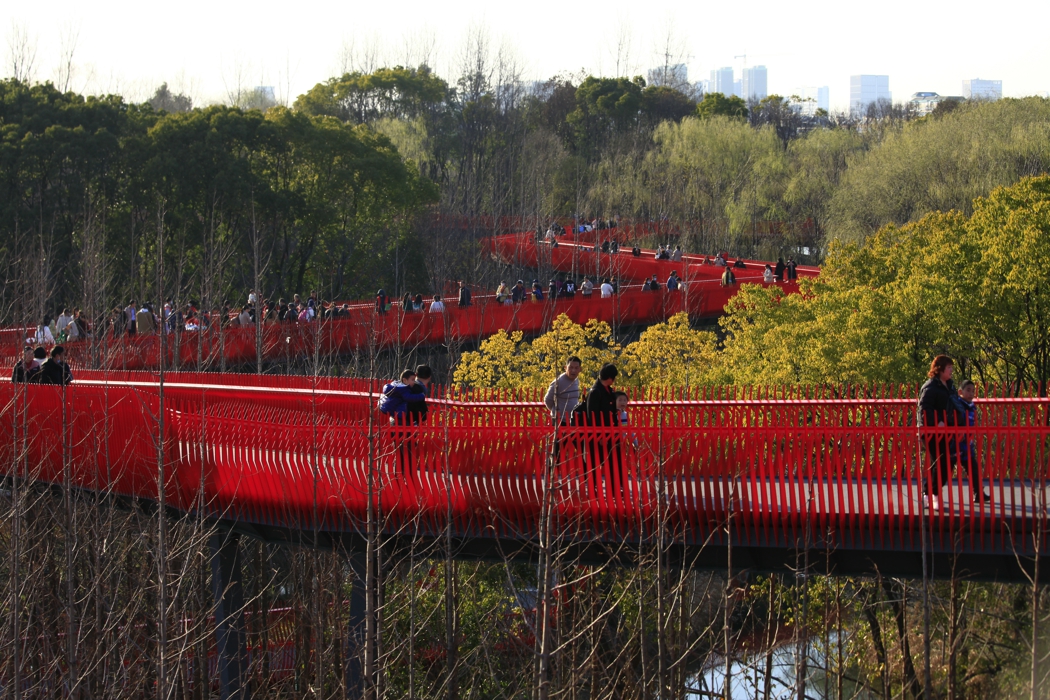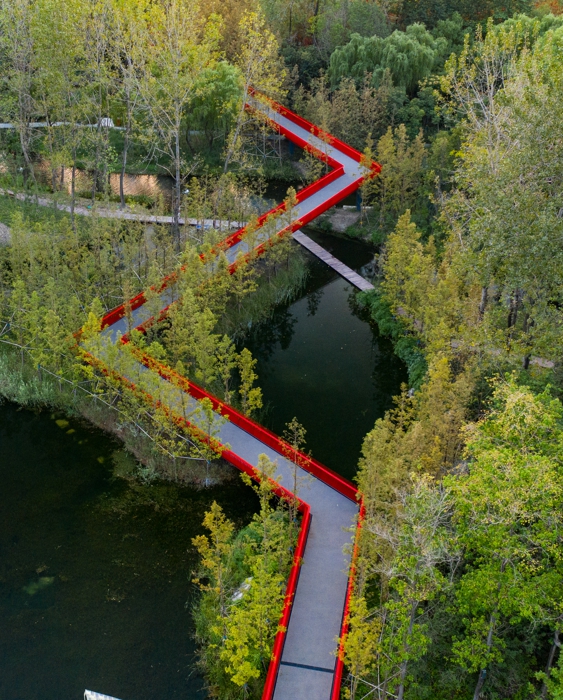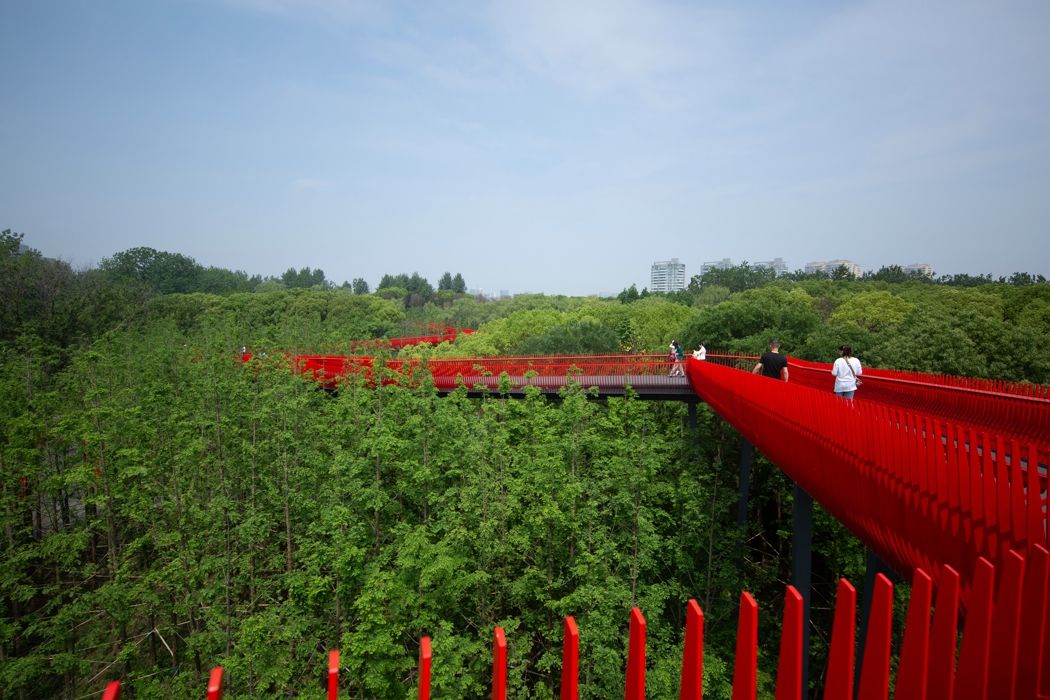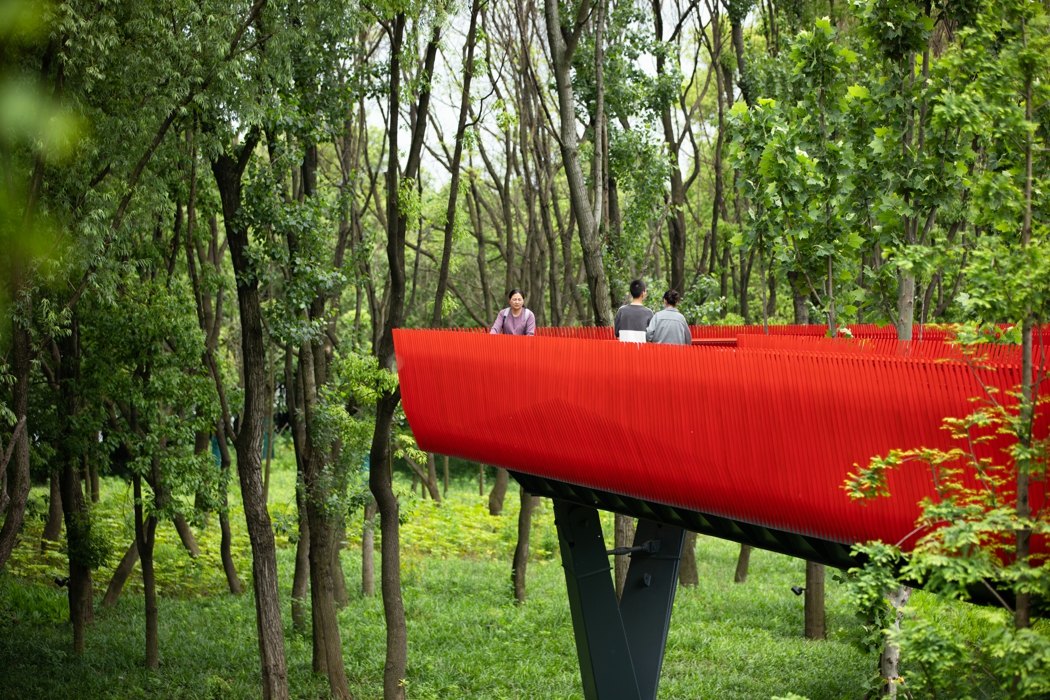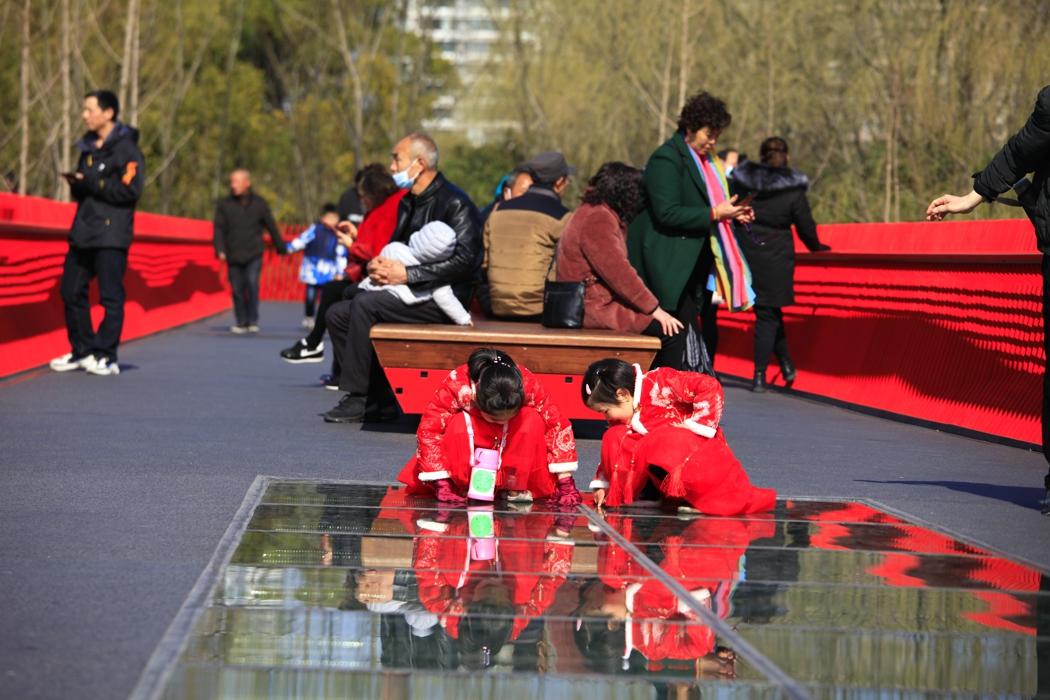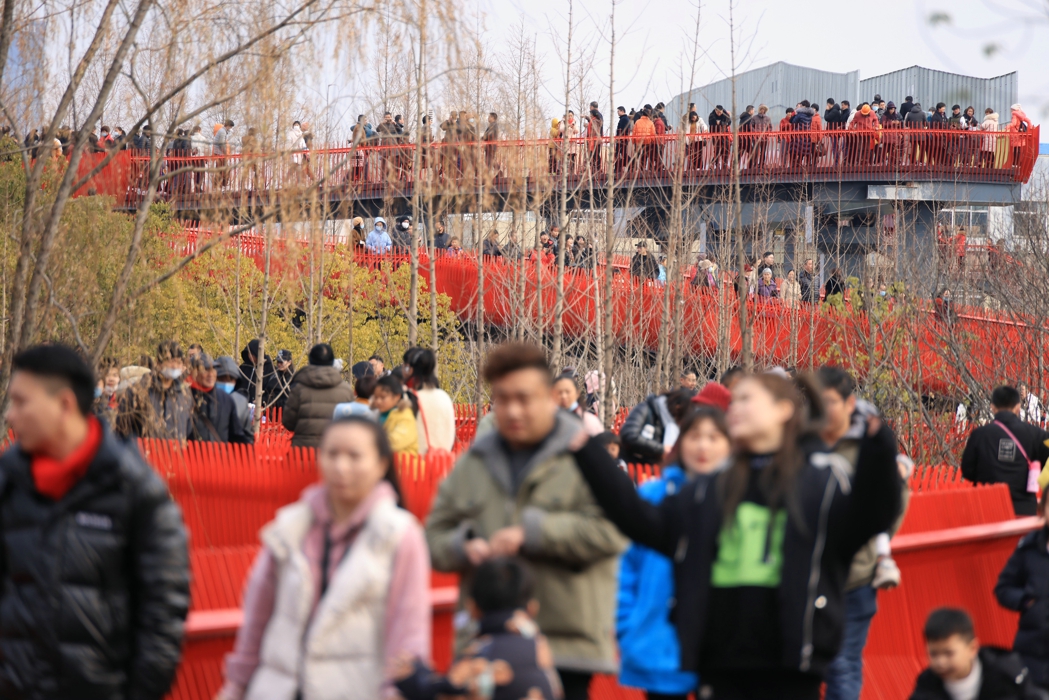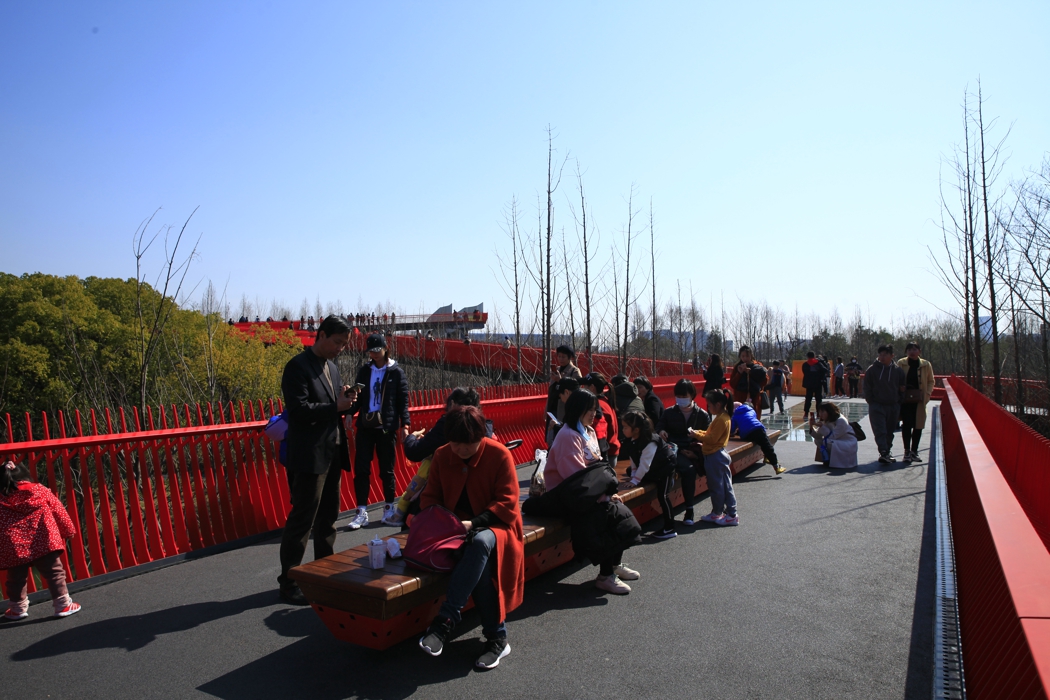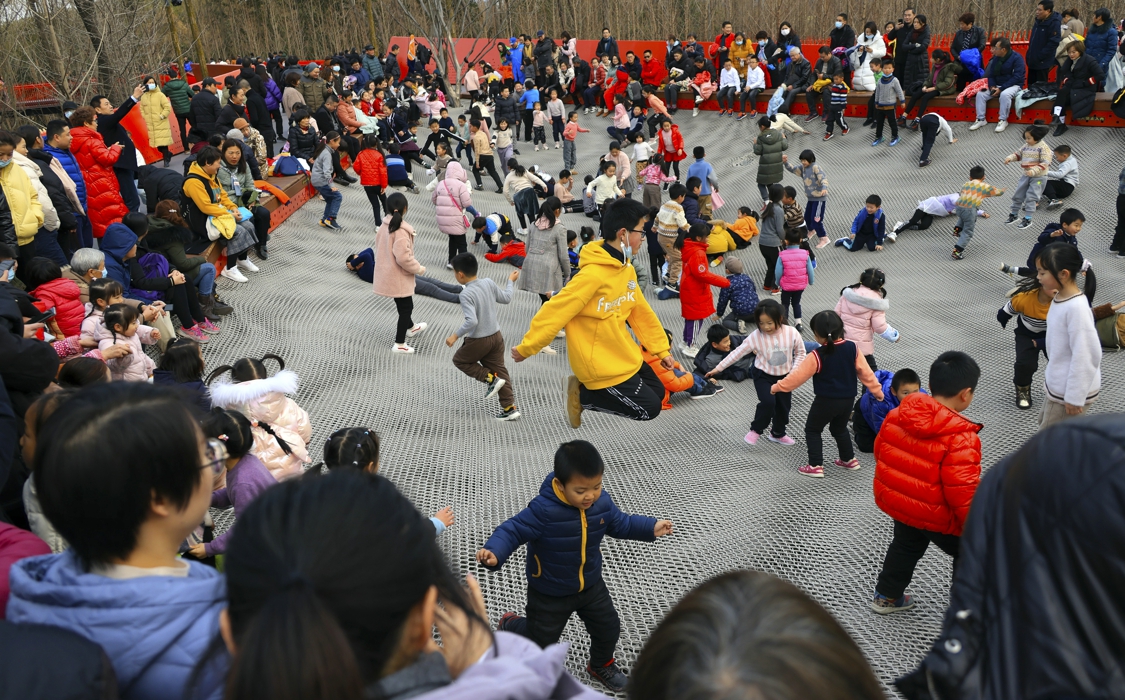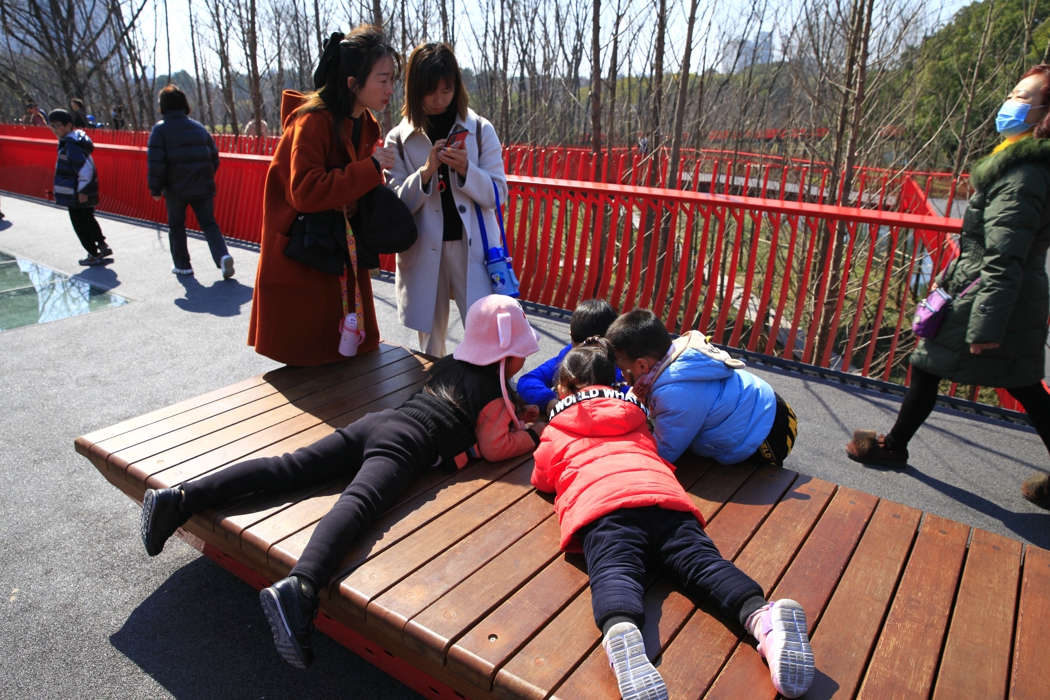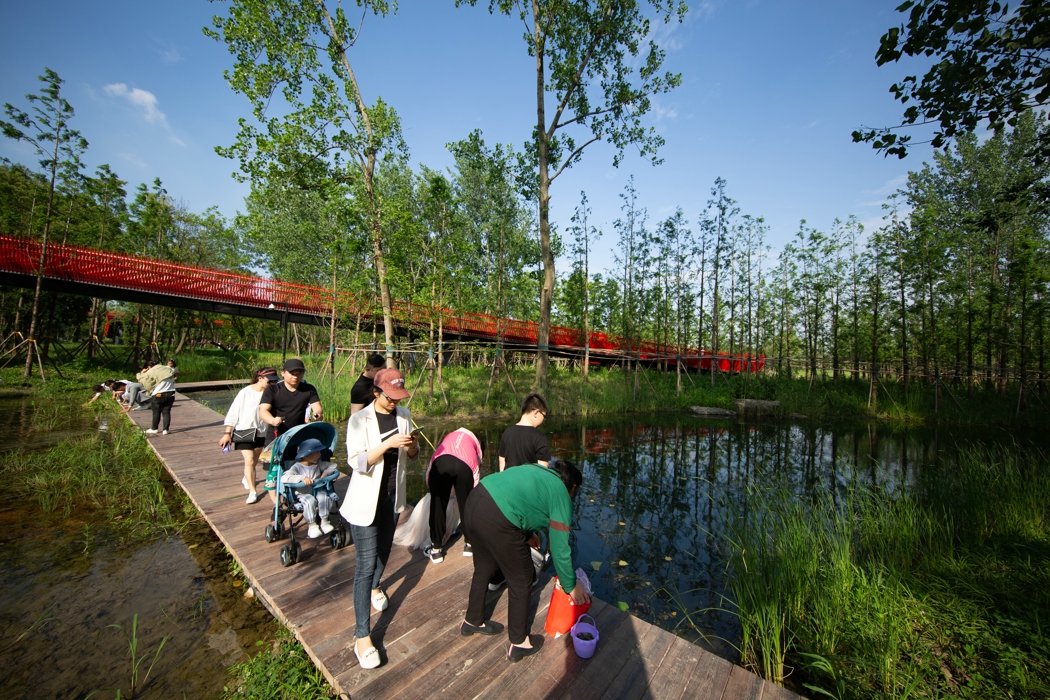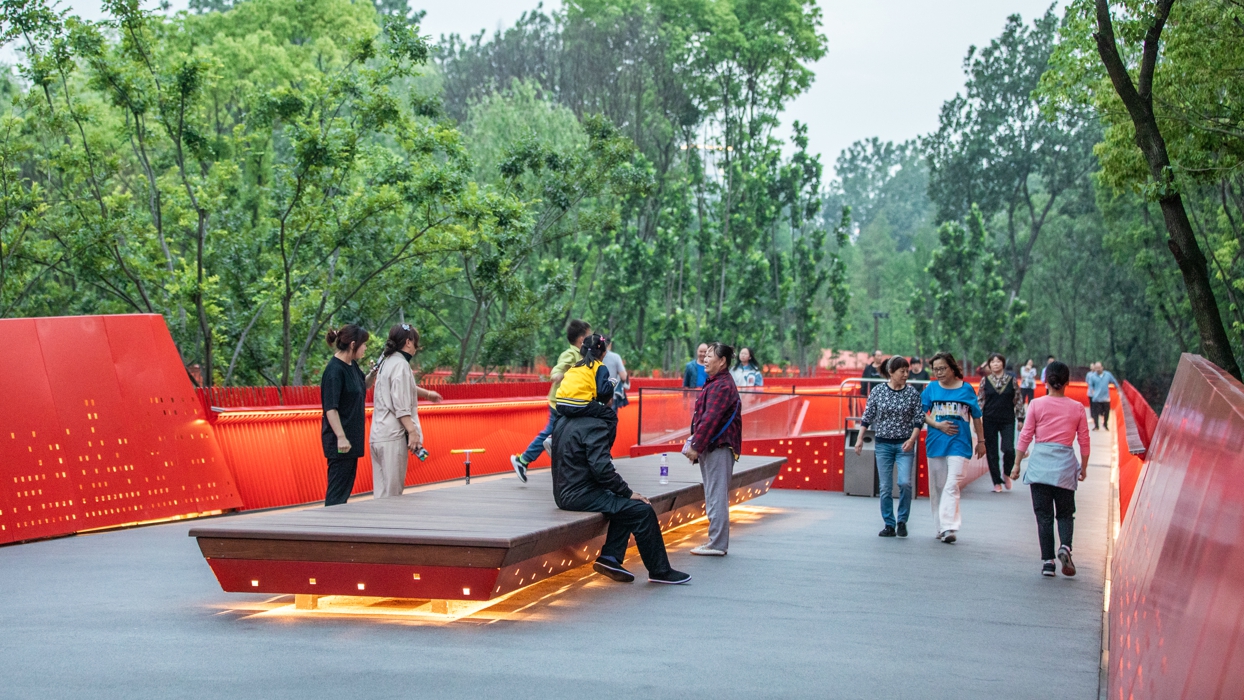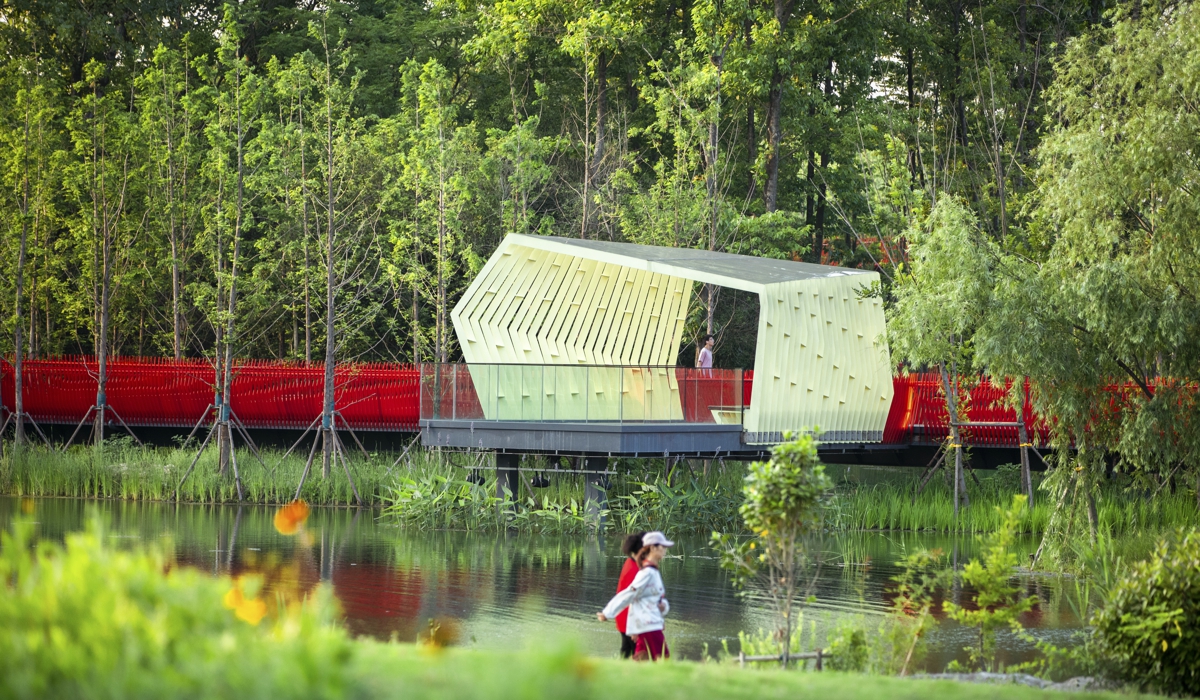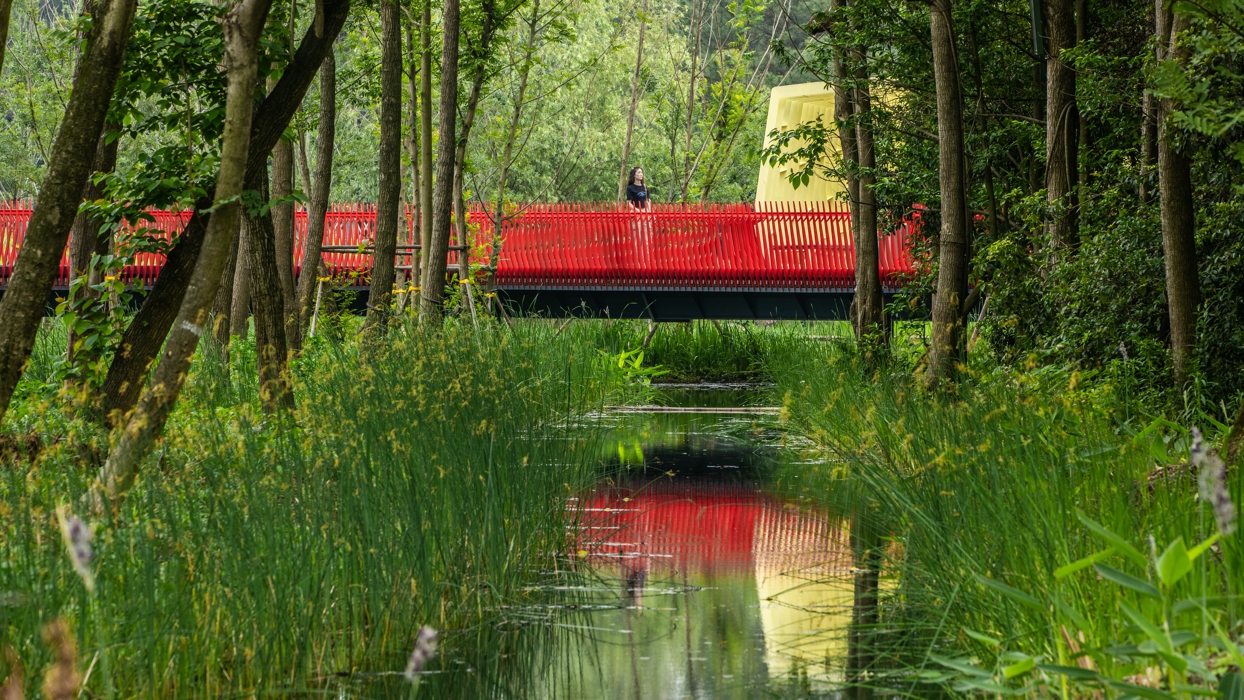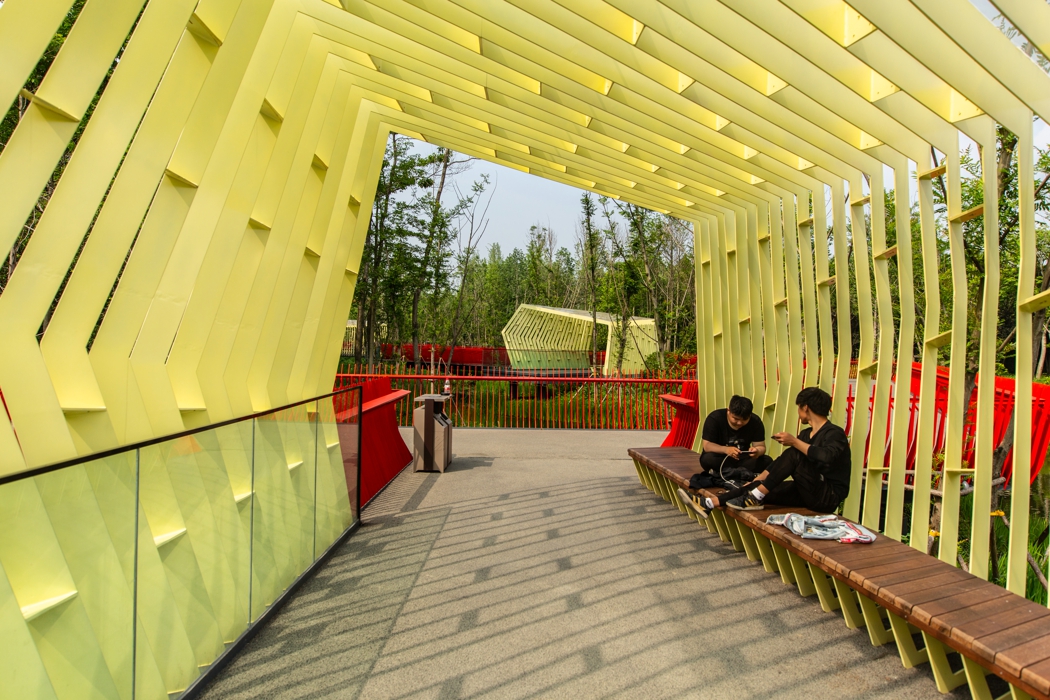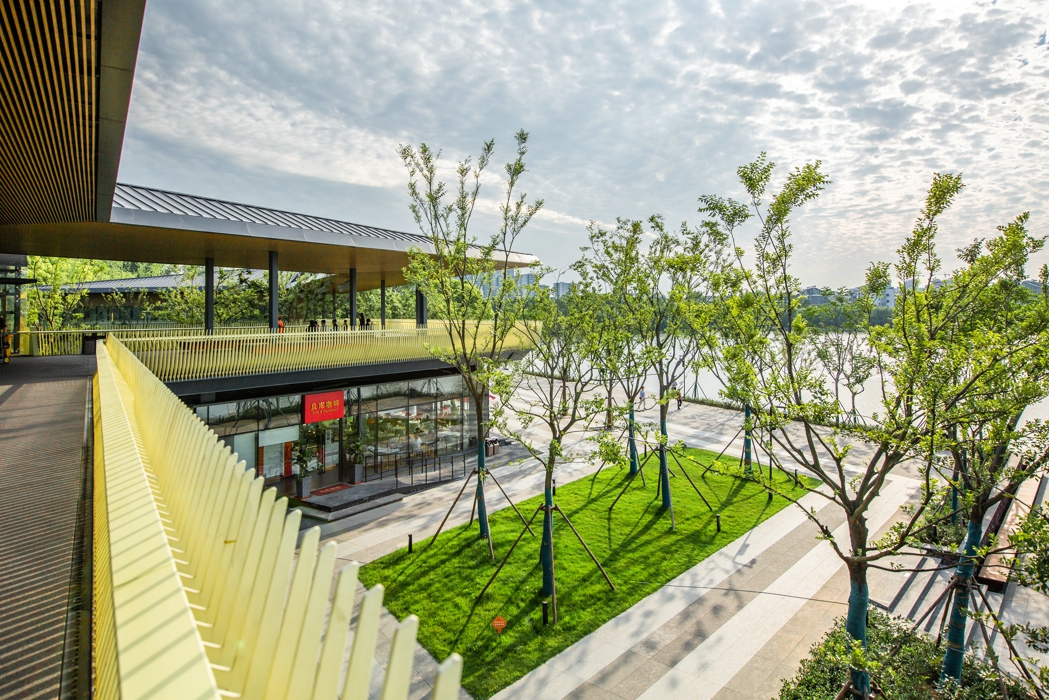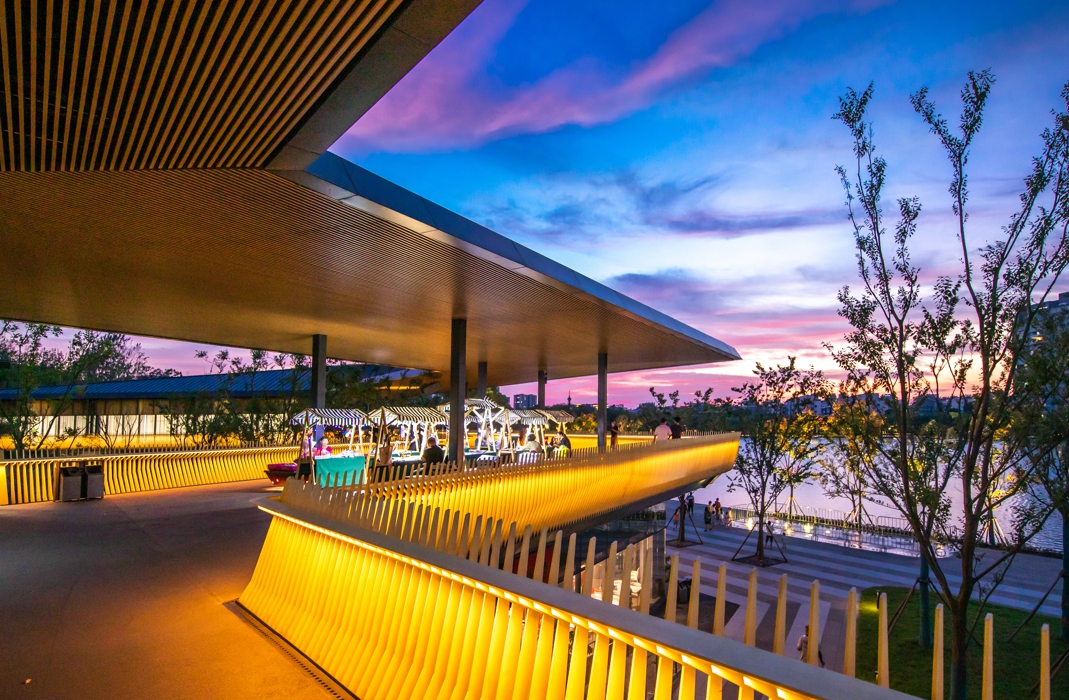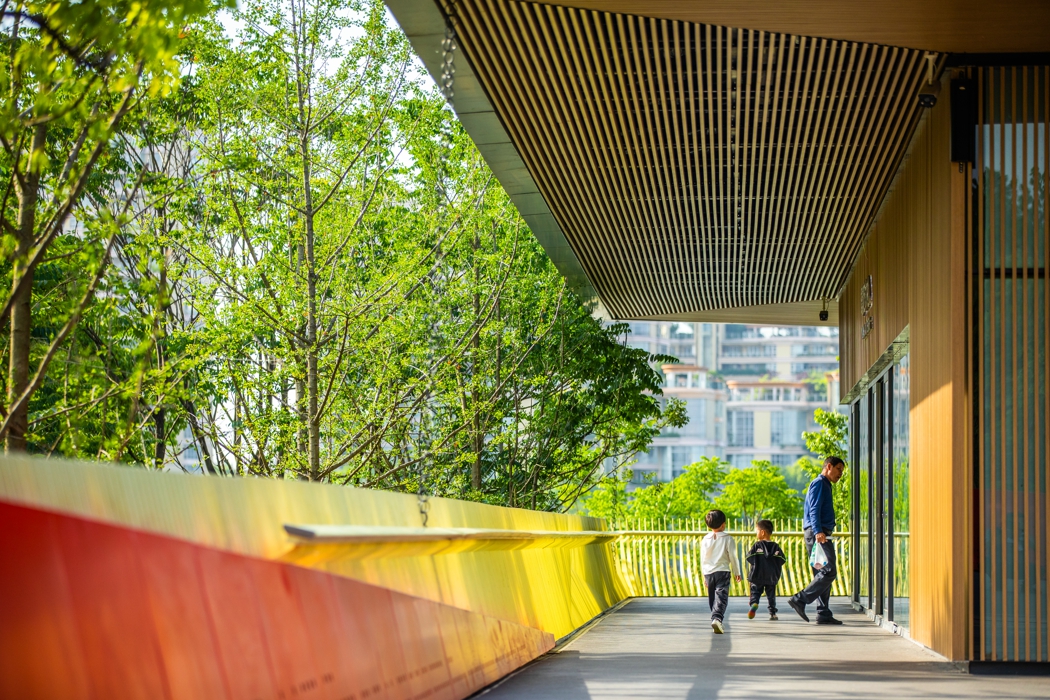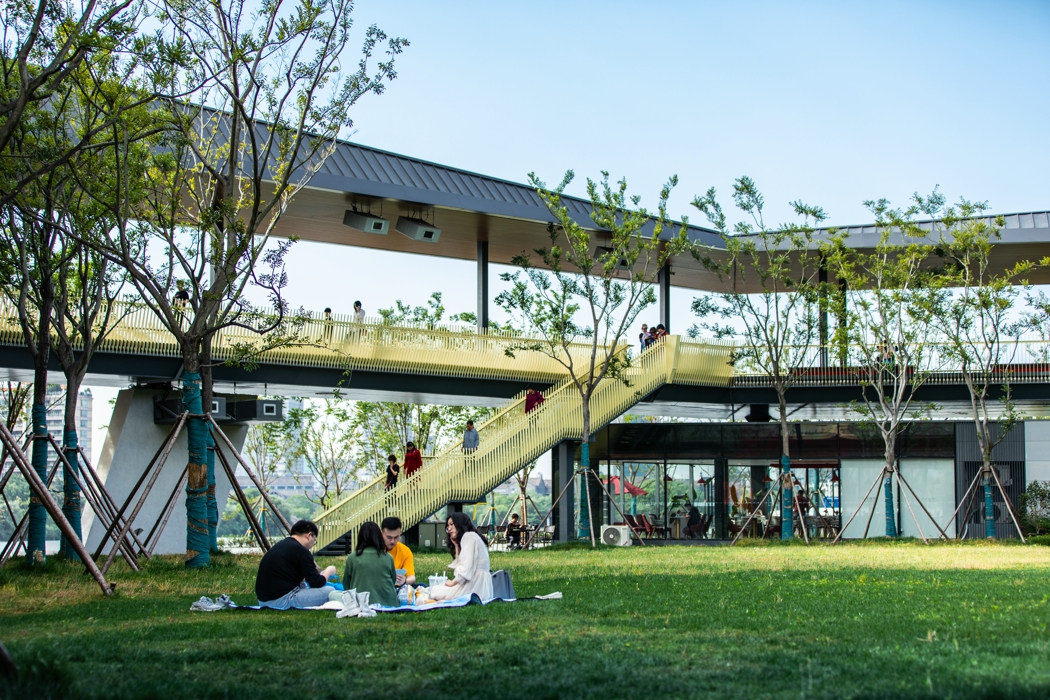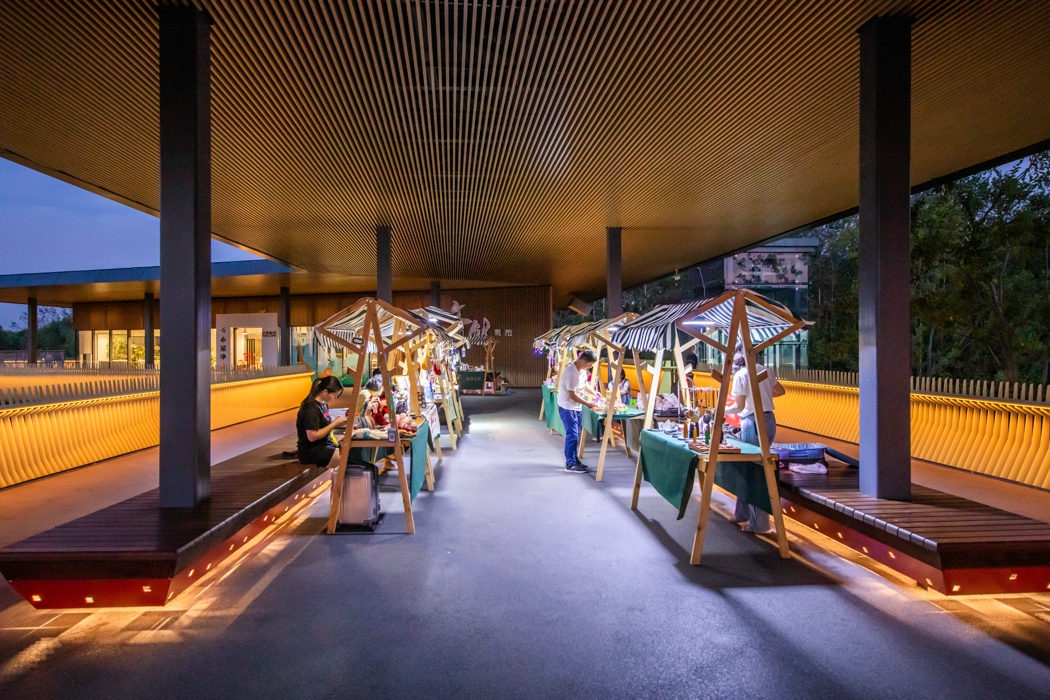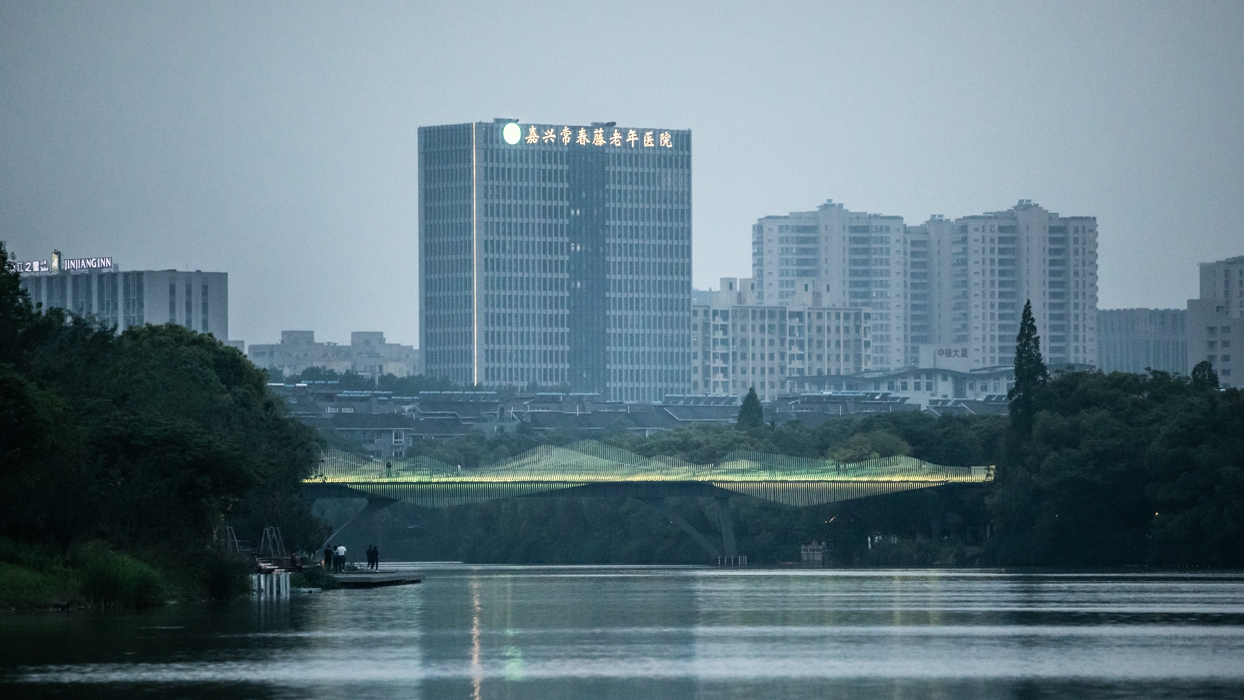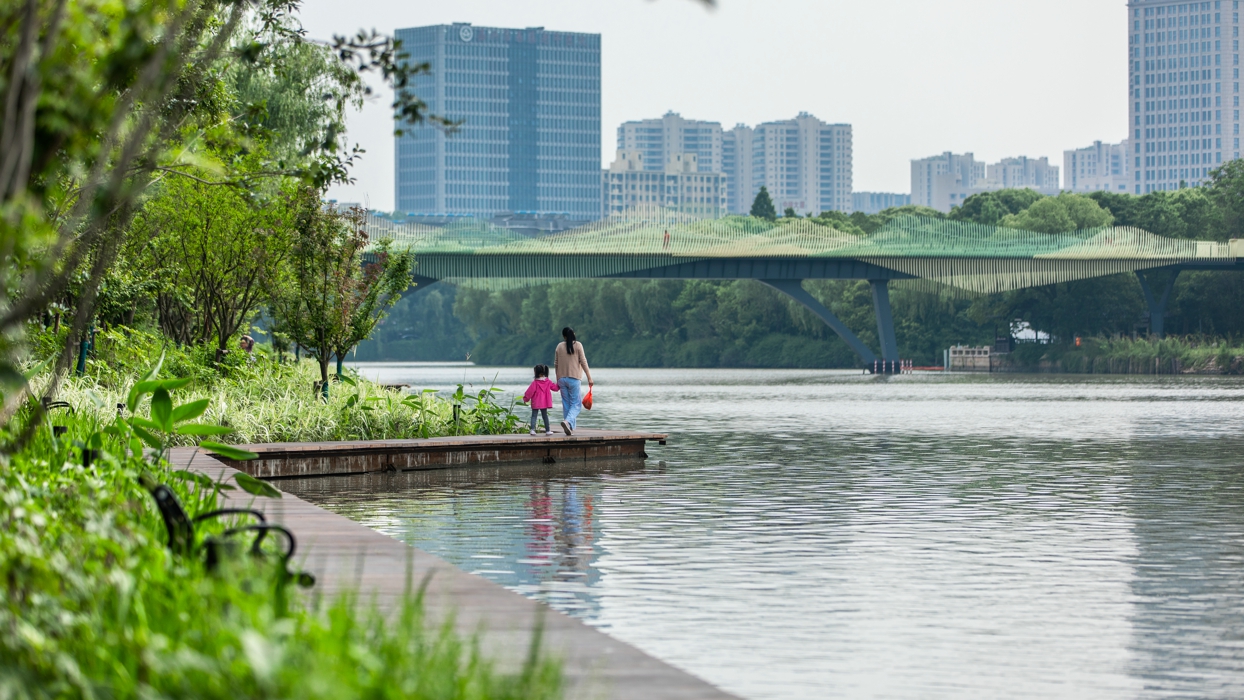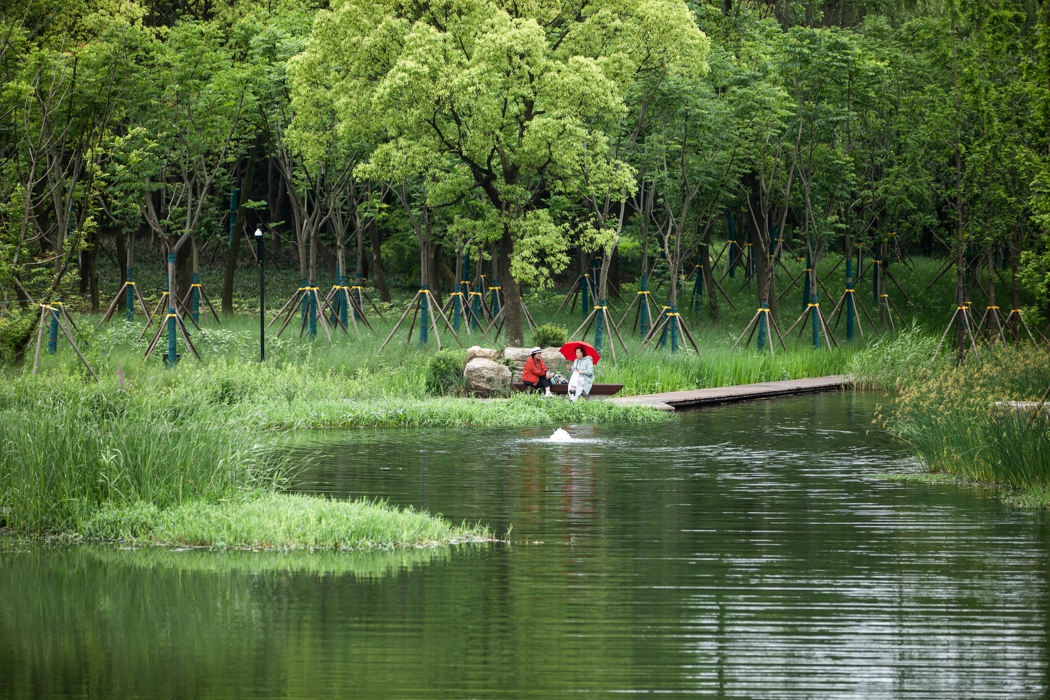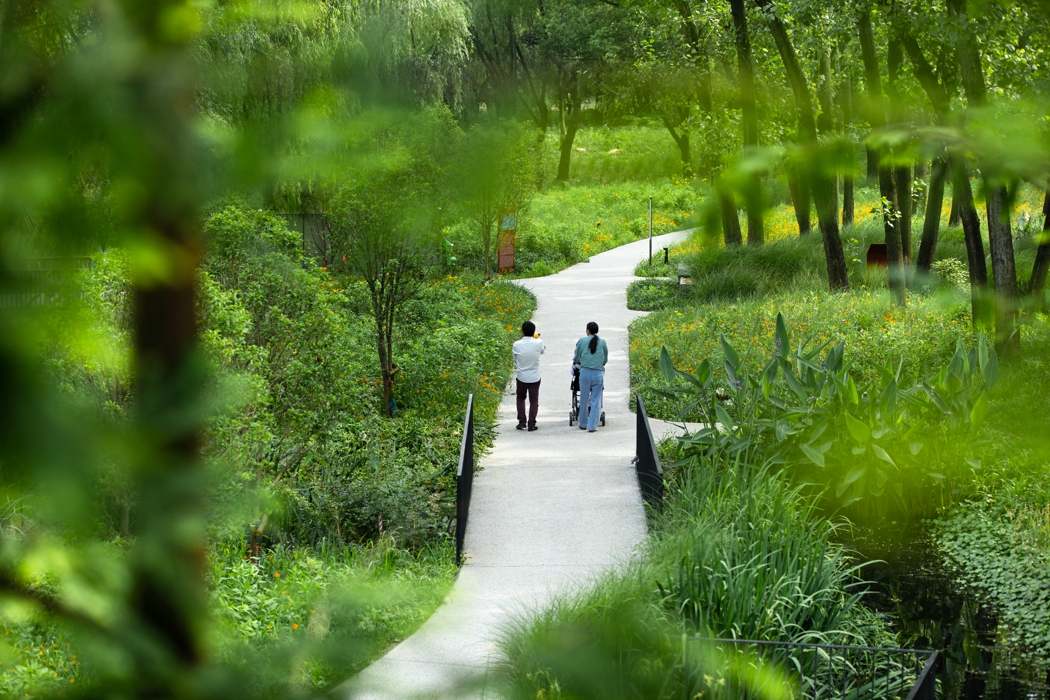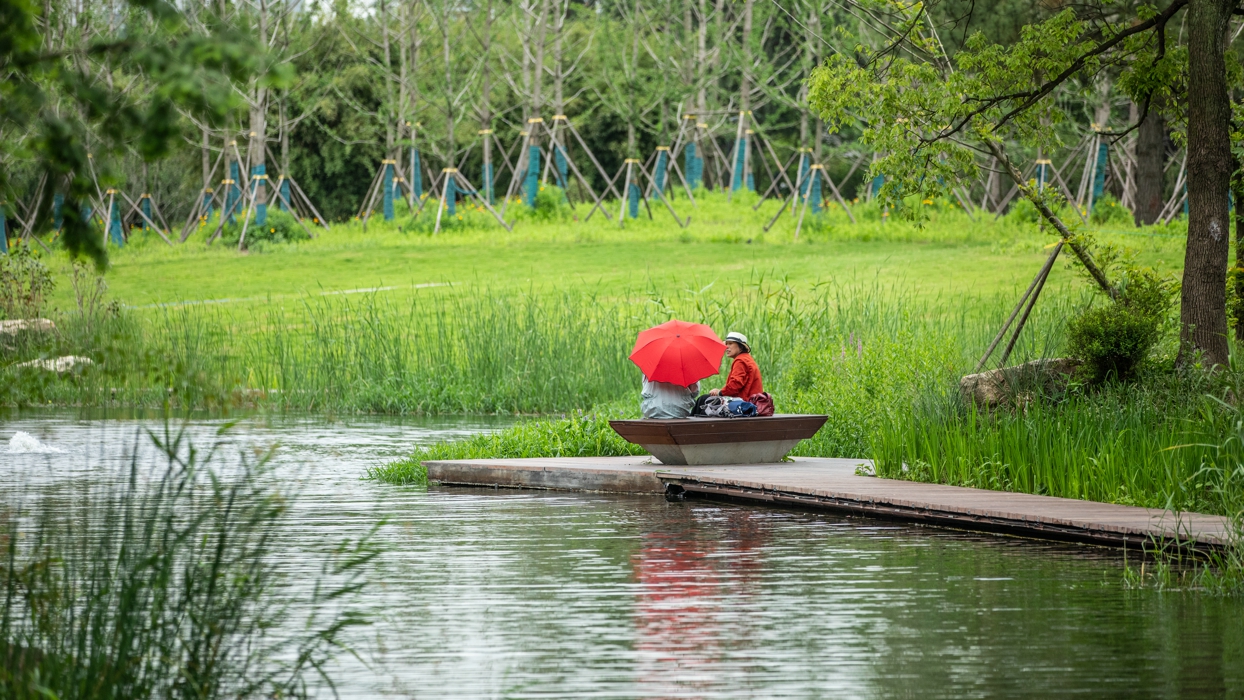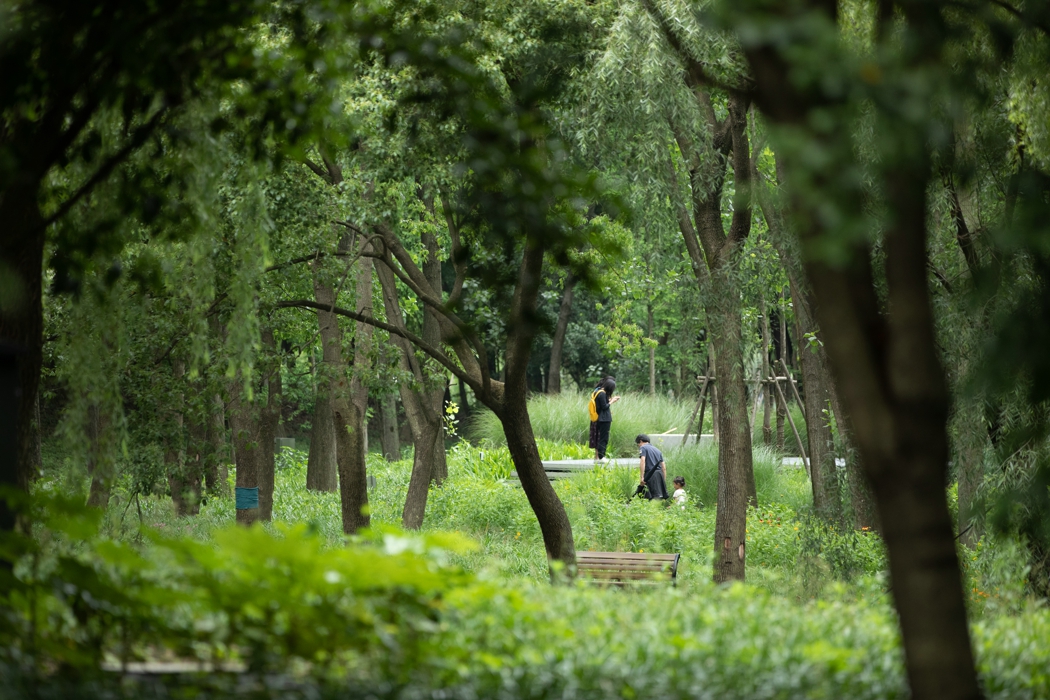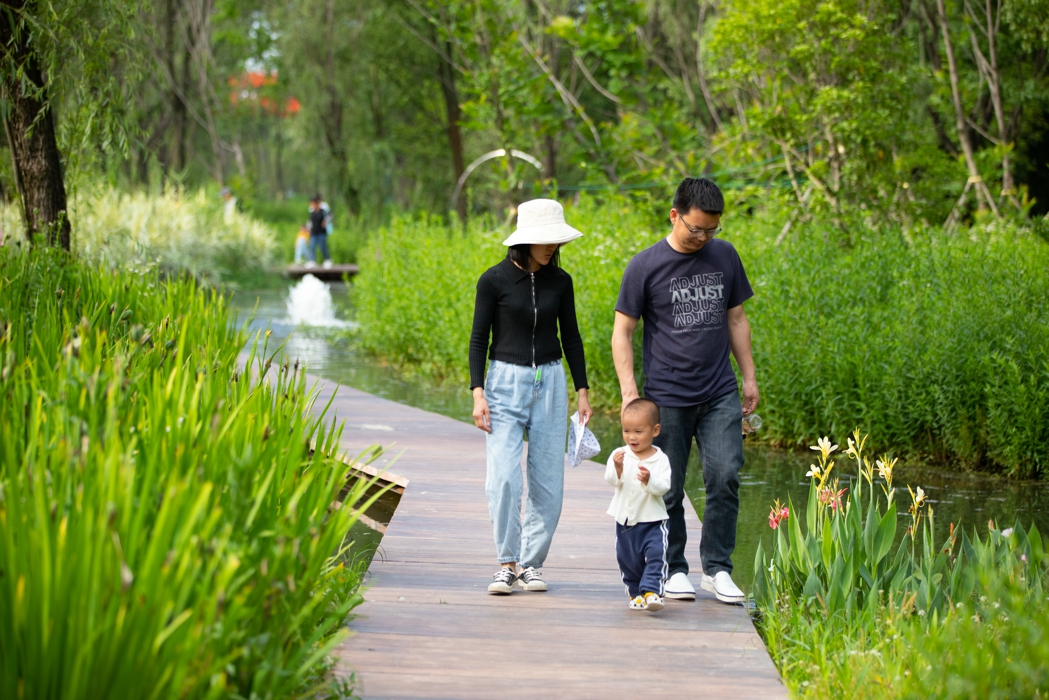Jiaxing Xinanhu Park
Project Information
- Project Location:
- China Jiaxing,Zhejiang
- Project Scale:
- 550 Hectares
- Design Time:
- November 2018
- Client:
- Jiaxing City Investment Development Group Co., Ltd
Project Profile
A Sky Web Park: Bridges as Public Spaces
1. Project Statement
At the heart of Jiaxing city, a web of skywalks provides a public space that floats above well-established wetlands and forests. The design not only protects the important island of urban nature from the impact of large numbers of visitors, but enhances it as well—while also helping meet the local community’s recreational demands and accommodating growing regional tourism. The “sky web” is integrated with cafés, shops, playgrounds, pavilions and other service facilities to become a truly public space floating above the tree canopy.
2. Objective and Challenge
Jiaxing, with a population over 1.5 million, lies on the east coast of China, centered between the cities of Hangzhou, Suzhou and Shanghai. The city center is home to a densely afforested green space called Xinanhu Park (Southwest Lake Park). Though it is part of the 5-square-kilometer Nanhu Scenic Area, which sees more than 10 million visitors annually, Xinanhu Park is functionally isolated from both surrounding neighborhoods and the city’s thriving tourism district. On the east, it is cut off from the central tourist district by a busy rail line; on the other three sides, it is surrounded by water and disconnected from the adjacent communities. Wet and densely vegetated, the park offers tremendous potential for bringing nature back to the city’s urban heart. Yet substantial and increasing tourism demands in the area, and recreational demand from the residents of local communities, pose challenges to the maintenance of natural attributes of this isolated, semi-wild landscape. The solution was a design for a Sky Web Park.
3. Design Strategy
A web of skywalks, totaling 3 kilometers in length, was designed to connect the tourist district to the east, across the railroad right-of-way, with the communities to the west, across the water. While the skywalk runs through dense forest canopy, not a single tree was cut during its construction. On average, the skywalk is 4-5 meters above the ground and 3 meters wide, with trees rising from both sides and growing through the deck surface to create an immersive atmosphere. The steel skywalk is painted bright red to create a vivid contrast with the overwhelmingly green surroundings.
Children’s playgrounds, cafés, book stores, pavilions and resting spots are integrated into the skywalk web. One of the playgrounds is a trampoline-style net hanging over the tree canopy, surrounded with seating that allows parents and children to closely interact with each other. In some sections, reinforced glass flooring affords visitors a view straight down to the ground, some 5 meters below. A web-based interpretative system, accessible via mobile phone, helps visitors learn more about both natural life in the tree canopy and the city’s skyline, and offers a new perspective to residents normally caught in the flat and narrow confines of the city’s streets.
Beneath the canopy and the web, the redesign interventions include diverting water into the constructed wetlands to demonstrate the water filtration services that urban nature can provide; stairs connect the skywalks to a network of paths that offers visitors an immersive nature-exploration experience in the “messy” undergrowth and wetlands.
4. Conclusion
The Sky Web Park has proved a great success. In its first year alone, the once-isolated and abandoned green space has become one of the most visited places in the city. In just the first month following the park’s opening in January 2021, daily visits grew to 100,000 —necessitating the intervention of police to manage the large inflow of visitors. The Sky Web Park not only increased the local carrying capacity for tourism, but has also helped improve the integrity of the natural habitats within it. Since its opening, the condition of the park’s ecosystems has dramatically improved: Nutrient-rich urban runoff is now being filtered through the constructed wetlands, and the biodiversity of native flora has increased. The Sky Web Park is helping show that innovative design can strike a balance between human and natural needs in highly urban environments.
